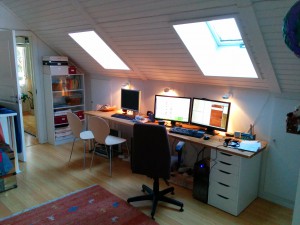 The HTTPbis working group of the IETF had an interim meeting in Zurich January 22nd to 24th. I participated from remote and I listened in on the discussions over webex and followed the jabber room while the meetings were going on, addressing HTTP2 protocol issues one by one ironing out quirks and progressing forward.
The HTTPbis working group of the IETF had an interim meeting in Zurich January 22nd to 24th. I participated from remote and I listened in on the discussions over webex and followed the jabber room while the meetings were going on, addressing HTTP2 protocol issues one by one ironing out quirks and progressing forward.
I won’t bore you with details why I wasn’t present in Zurich.
Here’s a couple of quick and brief reflections from my perspective:
Listening in from remote like this is not at all adequately compensating for not being there. A room full of people discussing something is really hard to follow from remote and completely impossible to interact with. It is better than not being able to listen in at all, but it is certainly not a replacement for being there.
It is amazing how much faster people can come to conclusions and fix issues when being in the same room. Issues that have been lingering in the tracker for a very long time could be dealt with and closed within minutes. Things like what to call the protocol in ALPN or to remove the ability to switched off flow control. Not all issues of course…
HTTP2 draft-09 that soon will become draft-10 to reflect the updates from this meeting and more, is from my perspective quite far in its process. It is clearly at a point that seems to be OK with most people and the discussions are now just about details. Of course the devil is in the details and I’m not saying it can’t take a long time to settle on them, but the structure and main concepts of the protocol are probably now established.
There were not very many proxy or server people at the interim. Most of the people seemed to be client-side oriented and some service oriented. I’m personally client-side biased myself but I hope this doesn’t lead to us deciding on things that the “other side” will have problems with down the line.
Firefox nightly supports HTTP2 draft-09 (for https:// URLs) and twitter supports it server side. Enable it in the browser by entering “about:config” in the URL bar and change the config entry called “network.http.spdy.enabled.http2draft” to true. Done.
Some of the biggest HTTP2 changes brought up compared to what draft-09 says include:
- no more ability to switch off flow control
- the prioritization field/concept “weighted dependency tree approach”
- >= TLS 1.2 with ephemeral ciphers
- MUST not use TLS compression
- tolerant to TLS false start or at least must accept/buffer application layer data
- padding
There was also a whole lot of discussions about TLS for http:// urls, proxys, MITM for SSL, opportunistic encryption and more but I believe most of those issues remained at the same position as before – I missed out on parts of the last afternoon so I may have missed some details. It’ll all be revealed in draft-10 and the mailing list I’m sure!
Update: the minutes from the interim meeting.



